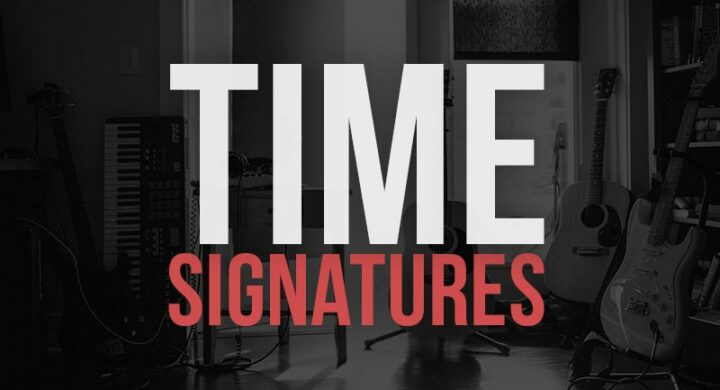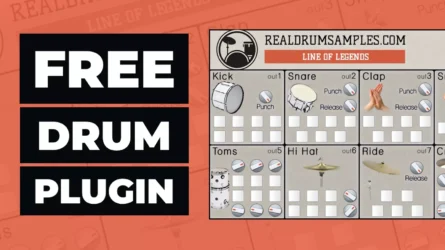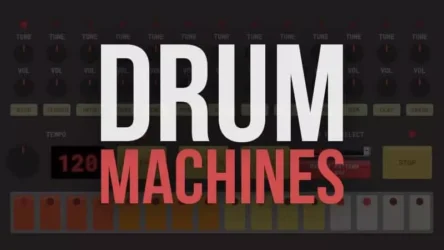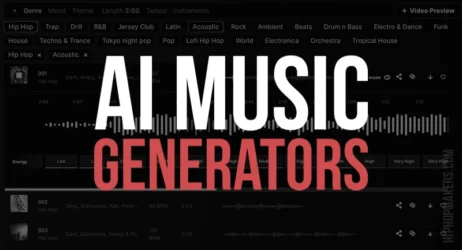This brief guide will answer what are time signatures in music, how to read time signatures, and explanations of different time signatures.
- What Are Time Signatures in Music
- Time Signature Examples
- How Do You Read a Time Signature
- What is a Time Signature Chart
- What is a 4/4 Time Signature
- What is a 3/4 Time Signature
- What Is a 6/4 Time Signature
- What Is a 6/8 Time Signature
What Are Time Signatures in Music?
A Time signature, also known as meter signature or measure signature, is a notational convention used to denote how many beats should be in each measure and which note value is given one moment. There are different many types of time signatures depending on the beat pattern followed by the music.
A musical staff is where we write the notes and the rests, and it consists of five parallel horizontal lines containing four spaces between them.
Which particular musical notes are meant depends on which clef is written at the beginning of a staff. There are two clefs: the Bass clef and the Treble Clef.
Now in printed music, precisely after the clef, a pair of numbers can be seen at the beginning of the staff. One number is written over the other, and they are called the time signatures.

The time signatures tell us two things:
#1. The number of beats in each measure:
The top number in the time signature tells us how many beats must be counted in each measure. So, for example, if the maximum number is 4, it denotes that each measure contains 4 beats.
#2. Which note value gets the beat
The bottom number in a time signature gives us the information about what kind of beat to count (or which note value gets the beat).
For example, if the bottom number in a time signature is 4, a quarter note is one beat. On the other hand, if the bottom number is 8 then an eighth note gets one beat.
There are also two types of time signatures that you need to know:
Simple Time Signatures
Here are some requirements necessary to be considered a time signature as a simple time signature:
- Each beat should be divided into two equal components
- Not getting the beat should be an undotted note
- The top number should not be divisible by 3 except when it is 3
- The number of beats should be the same in each measure
Some examples of simple time signatures include 3/4, 3/8
Compound Time Signatures
Here are some requirements necessary to be considered a time signature as a compound time signature:
- The top number should be evenly divisible by 3, with the exception of time signatures in which the top number is actually 3.
- The beat should be a dotted quarter or three eight notes.
- Each beat should be subdivided into three components.
Some examples of compound time signatures include 6/8, and 12/8.
What Are Some Time Signature Examples?
| Time Signature Type: | Examples: |
| Simple | 3/4 or 4/4 |
| Compound | 9/8 or 12/8 |
| Complex | 5/4 or 7/8 |
| Mixed | 5/8 & 3/8 or 6/8 & 3/4 |
| Additive | 3+2+3/8 |
| Fractional | 2½/4 |
| Irrational Meters | 3/10 or 5/24 |
How Do You Read a Time Signature?
Here’s how you can read a time signature:
- First, read the top number of the time signature. It tells you how many beats are supposed to be in the measure.
- Next, read the bottom number of the time signature. It tells what note gets the beat.
Here’s an example to implement these steps for reading the time signature: In a 2/4 time signature, reading the top number tells you that there are supposed to be two beats in a measure. At the same time, the bottom number signifies that the quarter note gets the beat.
What is a Time Signature Chart?
A chart that shows the most common regular time signatures is known as the time signature chart, and it also shows which are simple and compound time signatures.
Note that you may also come across the time signatures that are not shown by the chart. But the chart will show you the most common signatures that we find nowadays.
What is a 4/4 Time Signature?
A 4/4 time signature denotes that there are 4 quarter notes per measure.
Some examples in which the 4/4 time signature is used are as follows:
- The movement entitled Autumn from The Fours Seasons by Vivaldi
- Schubert’s Ave Maria, originally titled Ellens Gesang III, Hymne an die Jungfrau
- Frédéric Chopin’s Nocturne Opus 48 n°1 in C minor
- Pachelbel’s Canon
What is a 3/4 Time Signature?
A 3/4 time signature means three quarter-note beats are in each bar, and it is a simple triple meter. It is simply because each of those beats can subdivide into two parts naturally, and it is triple because it contains three beats in each bar.
Some examples in which the 3/4 time signature is used are as follows:
- The chorale of the cantata BWV 147 by J.S.BACH
- Frédéric Chopin’s Nocturne opus 15 n°1 in F Major
- Le boléro (the Bolero) by Maurice Ravel
- The Minuet Trio from Symphony N° 41 in C major KV. 551 by Wolfgang Amadeus Mozart
What Is a 6/4 Time Signature?
A 6/4 time signature means that there are six quarter notes per measure.
Some examples in which the 6/4 time signature is used are as follows:
- Frédéric Chopin’s Nocturne opus 9 n°1
- The first movement, entitled Allegro con brio, of Brahms’ Symphony No.3
What Is a 6/8 Time Signature?
A 6/8 time signature means that there are six eighth notes per measure.
Some examples in which the 6/8 time signature is used are as follows:
- Frédéric Chopin’s Nocturne opus 9 n°3
- Frédéric Chopin’s Nocturne opus 27 n°2 in D flat major
- The movement Lento assai, cantante e tranquilo from String Quartet N° 16, Opus 135 by Ludwig van Beethoven
What Is a 2/4 Time Signature?
A 2/4 time signature signifies that there are two-quarter notes per measure.
Some examples in which the 2/4 time signature is used are as follows:
- The first movement (Allegro con brio) of Beethoven’s Symphony No.5 in C minor
- The fourth movement entitled Finale of Ludwig van Beethoven’s Symphony No.3 in E flat major
- Frédéric Chopin’s Nocturne opus 15 n°2
- Beethoven’s Symphony N°6 in F major, entitled the Pastoral Symphony
Time Signature Overview
Time signatures and measures are notational conventions describing how many beats should be in a measure and which note value comprises one beat. A time signature is determined by the beat pattern executed by the music.
Understanding time signatures in music is vital, especially when writing music, whether it’s Western classical music or dance music.
Time signatures consist of two numbers, dictating how many notes will fit into one measure. For instance, four-quarter note beats is one of the most common time signatures found in Western music notation.
Time signatures can either be simple or complex. A simple time signature, like a quarter note beat, operates with strong and weak beats in exactly the same way for all the notes.
On the other hand, complex time signatures often use an eighth note beat and can create a different feel, though they may sound similar to the untrained ear.
The time signature in music notation comes after the key signature and is located at the beginning of a musical piece, marked by a bar line.
This applies to most time signatures, whether regular or irregular. Regular time signatures, such as duple, triple, and quadruple meters, each emphasize the first note of the measure differently. Even a single note in these time signatures can create the same effect.
However, some pieces of music might use different ways of organizing beats, like irregular time signatures or compound meters.
These can give music written in them a distinct feel, as they emphasize weak beats differently than regular time signatures.
The irregular time signature, for instance, can sometimes consist of a mix of two-time signatures, providing a unique rhythm.
A common time signature is often referred to as “cut time,” used widely in Western music, particularly in dance music. It usually emphasizes a duple meter, but remember, triple and quadruple meters can also be used to give different rhythmic effects.
Bonus tip: Even though there are many different time signatures, don’t let that intimidate you.
Start with the basics, like the duple and triple meters, and once you feel comfortable, move on to explore the more complex ones. Remember, practice is key.
Your understanding of time signatures, whether simple or complex, will significantly improve the more you use them.
Another tip is to listen to music with the specific time signature you’re trying to learn.
I hope you found this information helpful and we clearly answered what are time signatures in music.
If we missed anything, please share it in the comments.




